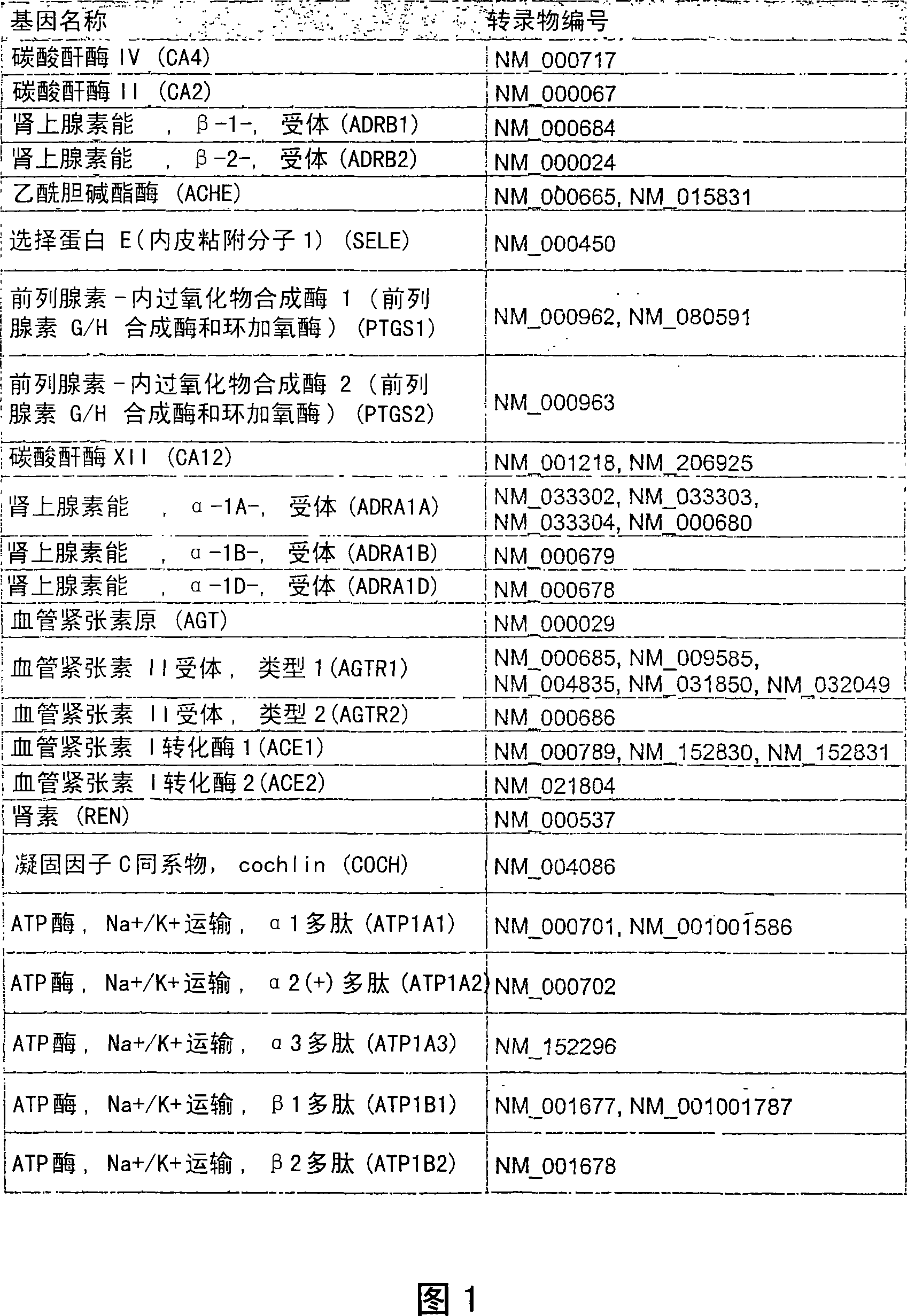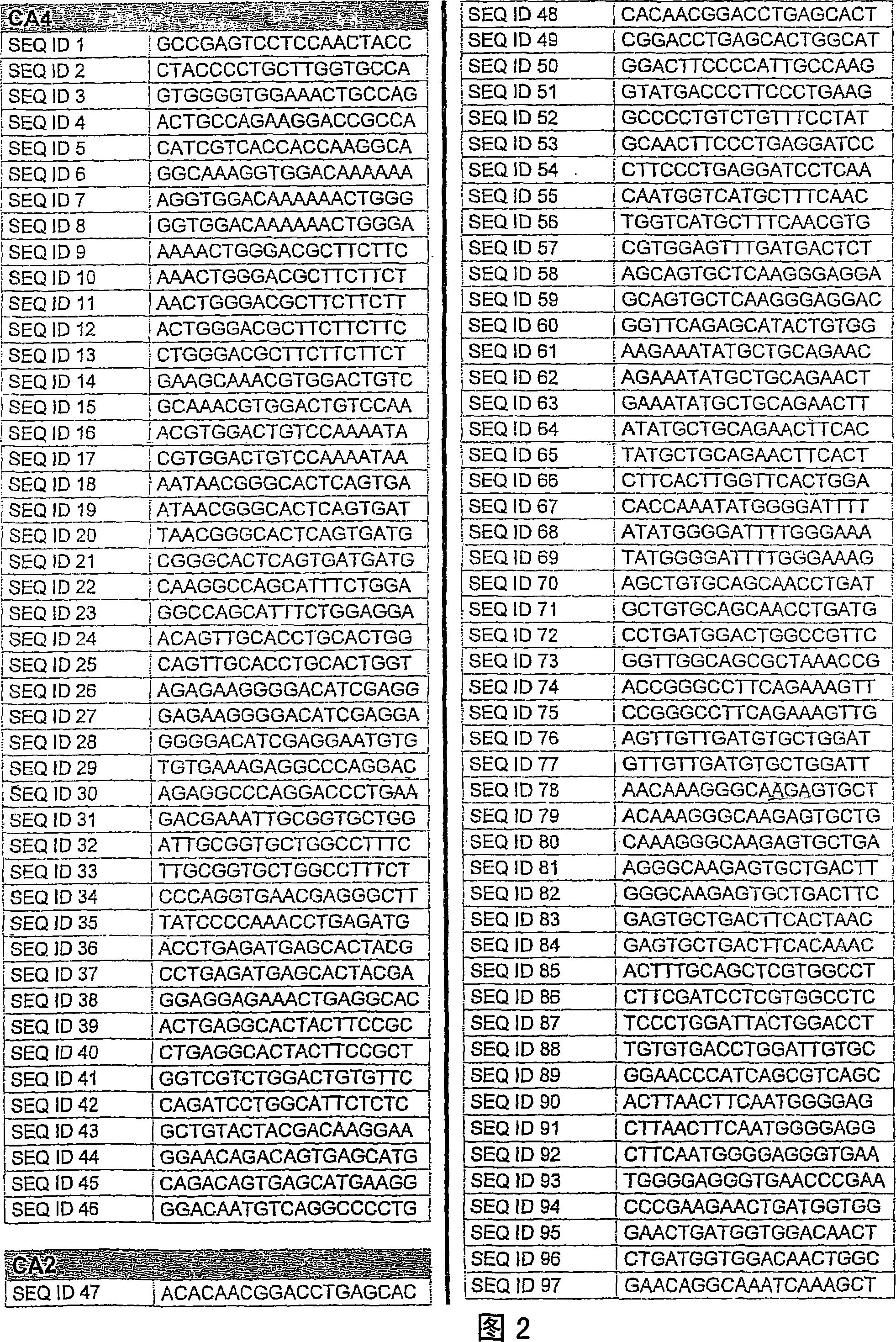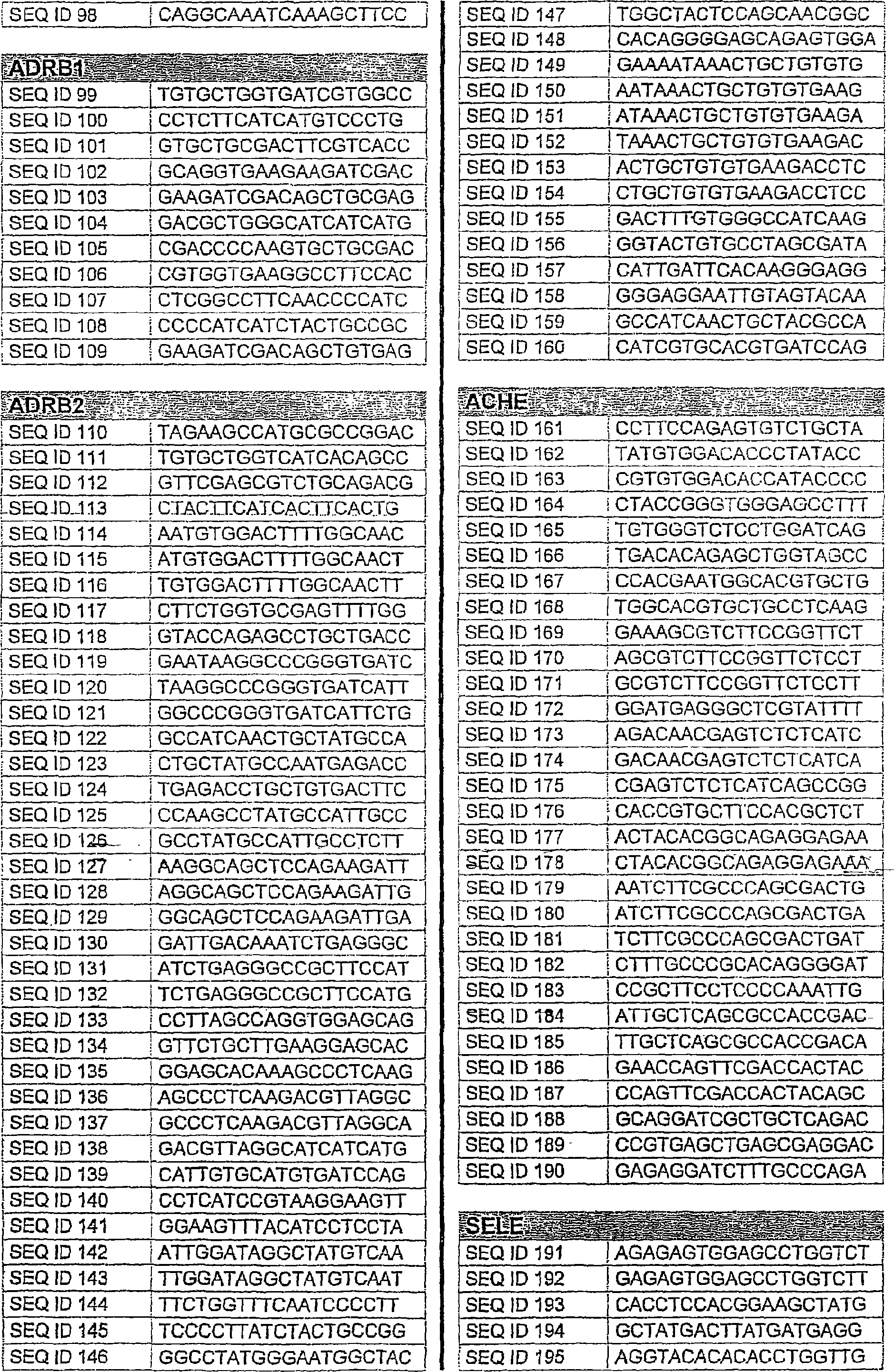Treatment of eye disorders characterized by an elevated intraocular pressure by sirnas
A technology for eye diseases and uses, applied in DNA/RNA fragments, recombinant DNA technology, sensory diseases, etc., can solve problems such as accurate monitoring and prognosis
- Summary
- Abstract
- Description
- Claims
- Application Information
AI Technical Summary
Problems solved by technology
Method used
Image
Examples
Embodiment 1
[0130] Example 1 In Vitro Assay.
[0131] To determine the inhibition of different targets involved in glaucoma using RNAi technology, the first step is to perform experiments in cell culture. For each target, several siRNAs were designed using specific software according to the aforementioned rules. The siRNAs were applied to cell cultures such as NPE, OMDC and HEK293. The effect of siRNAs on the target gene was analyzed by real-time PCR and semi-quantitative PCR according to standard protocols. Transcript levels of the gene targets were normalized using actin as a housekeeping gene. Table I below shows representative results of real-time PCR experiments for some of the above-mentioned target genes. The values represent the mean and their standard deviation of the percentage of siRNA interference on each gene expression that had been normalized to control cells. Different transcript levels at 24 and 48h time points were all significantly reduced after siRNA treatment co...
Embodiment 2
[0149] Example 2 In vivo assay.
[0150] Prior to siRNA therapeutic application, in vivo assays were validated to determine correct siRNA delivery.
[0151] Those siRNAs selected by in vitro assays were applied to animal models, following the procedure described above. To avoid the effect of IOP fluctuations due to the circadian cycle, all administrations were performed simultaneously. To determine the siRNA effect, intraocular pressures (IOPs) were measured as previously mentioned.
[0152] Since glaucomatous pathology suggests an increase in intraocular pressure, the aim was to obtain a reduction in intraocular pressure levels following siRNA administration.
[0153] Most of the results for the different targets showed a significant reduction in IOP levels compared to controls and also with commercial drugs (latanoprost and dorzolamide) and animals treated with vehicle alone (negative controls) had a significant decrease in their IOP baseline There are no significant chan...
PUM
 Login to View More
Login to View More Abstract
Description
Claims
Application Information
 Login to View More
Login to View More - R&D
- Intellectual Property
- Life Sciences
- Materials
- Tech Scout
- Unparalleled Data Quality
- Higher Quality Content
- 60% Fewer Hallucinations
Browse by: Latest US Patents, China's latest patents, Technical Efficacy Thesaurus, Application Domain, Technology Topic, Popular Technical Reports.
© 2025 PatSnap. All rights reserved.Legal|Privacy policy|Modern Slavery Act Transparency Statement|Sitemap|About US| Contact US: help@patsnap.com



